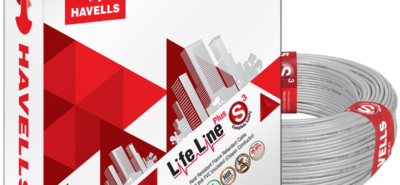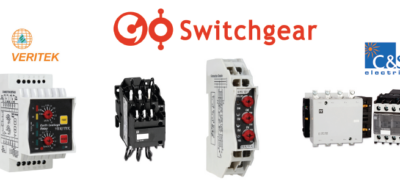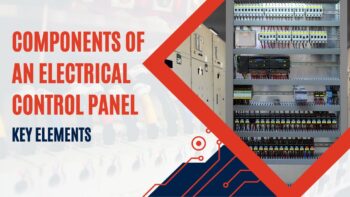The Essential Guide to High Voltage Insulation Testers: Features, Uses, and Safety Tips
In electrical testing, high voltage insulation tester plays a crucial role. These devices are essential for ensuring the safety and efficiency of electrical systems, particularly in high-voltage environments. Their primary function is to measure the insulation resistance of electrical components, a critical factor in preventing accidents and ensuring the longevity of electrical systems.
Here is a complete insulation testers guide to learn about its features, uses, and safety tips:
Features of High Voltage Insulation Testers

Advanced Measurement Capabilities
High-voltage insulation testers are essential tools in the arsenal of electrical testing and maintenance. The advanced measurement capabilities of these devices set them apart, offering precision and accuracy that are crucial in assessing the health of high-voltage equipment.
These testers can measure insulation resistance, a vital indicator of the integrity and safety of electrical systems. They can apply and measure voltages ranging from a few hundred volts to several thousand, making them versatile for various electrical systems. This range is particularly beneficial for testing in power generation, transmission, and distribution and in industrial applications where different voltage levels are prevalent.
The sophistication of these testers lies in their ability to detect even minute changes in insulation resistance. This sensitivity is critical in early fault detection, allowing maintenance teams to address issues before they escalate into significant failures. For instance, a slight decrease in insulation resistance can indicate moisture ingress, aging, or damage to insulation materials.
To cater to diverse testing needs, many high voltage insulation testers feature multiple test voltages, adjustable to suit the specific equipment requirements. This functionality is complemented by the ability to perform stepped voltage tests, where the applied voltage is incrementally increased. This approach is useful in stress testing insulation and identifying voltage thresholds where insulation may begin to break down.
Moreover, these testers often incorporate advanced algorithms and data processing capabilities to interpret test results accurately. They can distinguish between stable insulation conditions and transient phenomena like polarization and capacitive effects, ordinary in high-voltage equipment. This feature ensures that the readings are accurate and meaningful for diagnostic purposes.
User-Friendly Interfaces
In the realm of high voltage insulation testers, user-friendly interfaces have become a standard, catering to the needs of both seasoned professionals and beginners. Modern testers are designed with clear, readable displays, often featuring graphical interfaces that present data in an easy-to-understand format. This aspect is crucial for quick and effective decision-making during testing procedures.
The controls on these devices are straightforward, often accompanied by intuitive menus and touch-screen capabilities. This design reduces the learning curve and allows users to perform complex tests efficiently. Additionally, many of these devices come equipped with pre-programmed test sequences, simplifying the testing process and ensuring consistency in testing procedures across different users and locations.
Software integration is another key feature of a modern insulation tester. Many models come with software for data management, analysis, and reporting. This software integration enables users to store test results, compare historical data, and generate comprehensive reports. Such capabilities are invaluable in maintaining long-term records of equipment health and planning maintenance schedules.
Durable and Reliable Design
High-voltage insulation testers are engineered to withstand the demanding conditions of fieldwork. Durability and reliability are at the forefront of their design, ensuring they perform consistently under various environmental conditions.
These testers often feature robust casings made from materials like reinforced plastics or metal, protecting the internal components from physical and environmental impacts. This rugged design is essential for field use, where the equipment may be exposed to dust, moisture, and varying temperatures.
Weather resistance is another critical aspect of their design. Many high-voltage insulation testers are built to operate in a wide range of weather conditions, from scorching heat to cold. This versatility is crucial for reliability in outdoor applications and different geographical regions.
Electromagnetic compatibility is also a key consideration in the design of these testers. They are built to function accurately in environments with high electromagnetic interference, common in industrial and high-voltage settings. This feature ensures that external electromagnetic fields do not affect the readings, which could otherwise lead to inaccurate measurements.
Uses of High Voltage Insulation Testers

Preventive Maintenance
Preventive maintenance is critical to managing any electrical system, and high-voltage insulation testers are vital tools in this regard. Regular insulation testing forms the cornerstone of preventative maintenance, helping to avert system failures and extend the lifespan of electrical equipment.
Insulation testers assess the integrity of electrical insulation by measuring resistance. This measurement is crucial because it can reveal the gradual degradation of insulation, which is not always apparent through visual inspection. By detecting deteriorating insulation, these testers help prevent short circuits, electrical leaks, and potential fire hazards.
Regular testing schedules allow maintenance teams to track insulation degradation over time. This proactive approach helps schedule repairs and replacements before a complete breakdown occurs. Consequently, this reduces downtime and saves costs from emergency repairs or unplanned outages.
Quality Assurance
High voltage insulation testers are indispensable in ensuring quality and compliance with safety standards in the manufacturing and assembly of electrical components. Every electrical product, from household appliances to industrial machinery, must adhere to stringent safety regulations, and insulation integrity is a key parameter in these standards.
During manufacturing, a 5kV insulation tester is used to verify that each product meets the required insulation resistance levels. This testing is crucial not just for compliance but also for the brand reputation and consumer trust. A failure in electrical insulation can lead to product recalls, legal issues, and damage to the manufacturer’s reputation.
These testers also play a pivotal role in research and development. They are used to evaluate the effectiveness of new insulation materials or designs, ensuring that innovations in electrical equipment are both effective and safe.
Fault Diagnosis
When diagnosing faults in electrical systems, high-voltage insulation testers are invaluable. Electrical faults are often attributed to insulation failure – a common issue that can lead to severe consequences like equipment damage, power outages, and safety hazards.
When a fault occurs, technicians use insulation testers to diagnose it comprehensively. These testers facilitate quick and accurate repairs by pinpointing the exact location and nature of the insulation breakdown. This precise diagnosis is crucial in complex electrical systems where multiple insulation materials for electrical applications could be the potential cause of failure.
Safety Tips for Using High Voltage Insulation Testers

High-voltage insulation testers are powerful tools used in electrical testing. While they are indispensable in maintaining and inspecting electrical systems, they pose significant safety risks if mishandled.
Adhering to safety guidelines is paramount to ensure the user’s well-being and the testing process’s effectiveness. Here are some detailed safety tips:
Prioritize Personal Safety
- Wear Protective Gear: Personal protective equipment (PPE) is essential when dealing with high-voltage equipment. Key items include:
- Insulating Gloves: To protect against electric shocks.
- Safety Goggles: To shield the eyes from electrical arcs and debris.
- Flame-Resistant Clothing: To minimize the risk of burns from potential electrical fires.
- Work in Teams: Whenever possible, conduct testing with a partner. In case of an emergency, having someone on hand can make a significant difference.
- Stay Alert: Always be conscious of your surroundings. Be aware of potential hazards in the work area, such as wet surfaces or exposed wiring.
Understand and Follow Guidelines
- Read the Manual: Before using an insulation tester, thoroughly read and understand the manual. Different models may have unique features or safety precautions.
- Understand the Ratings: Be aware of the voltage ratings of the tester and the tested system. Using a tester on a system that exceeds its rated capacity can be dangerous.
- Follow Procedures: Adhere to standard operating procedures for insulation testing. This includes ensuring the equipment being tested is de-energized and properly grounded.
- Be Aware of Environmental Factors: Environmental conditions such as moisture, temperature, and flammable materials can affect the safety and accuracy of insulation testing.
Regular Calibration and Maintenance
- Routine Calibration: Regular calibration ensures the tester provides accurate readings, crucial for identifying potential hazards. Calibration should be performed according to the manufacturer’s guidelines.
- Regular Maintenance Checks: Perform regular checks on the tester for signs of wear and tear, especially on the cables and probes. Damaged equipment can be a significant safety risk.
- Keep Records of Maintenance and Calibration: Maintain a log of all maintenance and calibration activities. This not only helps in keeping track of the health of your tester but also in planning future maintenance schedules.
- Update Software: Ensure the software is regularly updated for testers with software components. This can enhance the functionality and safety features of the tester.
- Handle Batteries with Care: For testers powered by batteries, handle and store the batteries properly. Faulty batteries can cause inaccurate readings and pose safety risks.
Additional Safety Considerations
- Stay Informed: Keep up-to-date with the industry’s latest safety standards and practices.
- Emergency Procedures: Be prepared with a clear plan for emergencies. This includes knowing the location of emergency equipment and having a clear evacuation route.
- Training and Education: Regular training sessions should be conducted for all personnel using the testers. These sessions should cover both operational and safety aspects.
FAQs:
What is the primary purpose of a high-voltage insulation tester?
It measures the insulation resistance of electrical components, which is crucial for preventing accidents and ensuring system longevity.
How often should high-voltage insulation testers be calibrated?
Calibration should be done annually or per the manufacturer’s guidelines to ensure accurate readings and safety.
Can high-voltage insulation testers be used on any electrical system?
They can be used on various systems but always within the voltage ratings specified for the tester.
What are the risks of not using protective gear with these testers?
Not using protective gear increases the risk of electric shocks, burns, and other serious injuries.
Are high-voltage insulation testers suitable for home use?
They are primarily designed for industrial and commercial applications, not typically for home use.
Conclusion:
High-voltage insulation testers are indispensable tools in electrical testing and maintenance. They provide advanced measurement capabilities, and user-friendly interfaces, and are built to withstand challenging environments. Essential for preventive maintenance, quality assurance, and fault diagnosis, these testers play a crucial role in ensuring the safety and efficiency of electrical systems.
However, their effectiveness is deeply intertwined with adherence to safety protocols, regular calibration, and proper maintenance. Understanding their operation and handling them with care is paramount. Ultimately, these testers are not just tools but guardians of electrical safety and reliability.
If you want a good-quality insulation tester, buy it from GoSwitchgear!










Leave a Reply